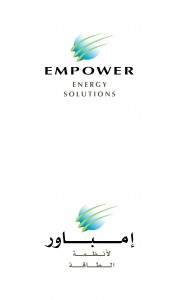| Dubai Healthcare City Treated Sewage Effluent-Reverse Osmosis Plant EMPOWER –District Cooling Plant Dubai, UAE  PDF Summary PDF Summary |
The major challenges that face any district cooling provider are to operate the chiller systems with the highest achievable efficiency, minimize water wastage and reduce the cost of operation.This documentation was prepared to demonstrate how the conversion from the usage of potable or domestic water in district cooling plants into alternative water sources (specifically Treated Sewage Effluent) can be achieved and showcases this accomplishment with the integration of reverse osmosis technology. The financial savings incurred from this approach are also demonstrated.It is important to define that “domestic water” is the potable water produced by the local governmental utility DEWA (Dubai Electricity and water authority) using the process of sea water desalination. This water is distributed throughout the city of Dubai for the domestic use. On the other hand, “TSE”, treated sewage effluent is the sewage water recycled by the local Municipality DM (Dubai Municipality) through a Sewage Treatment Plant. TSE water is primarily used by the local municipality for irrigation.The key concern involving the use of alternative water sources other than domestic water such as grey water or treated sewage effluent is that it is not advised to be used directly in the District Cooling System unless it is treated due to the high risk associated with using it in the raw form. The risk arises from the fact that this type of water contains high concentration of contaminants and high biological fouling potential which would degrade the performance of the heat exchange equipment. Several simulation calculations were done to provide a range of alternatives to the use of domestic water in the cooling towers of a district cooling plant. These calculations helped to narrow down the options and provided a guide to select the optimum combination of Treated sewage effluent water mixed with treated TSE through reverse osmosis technology. As a result of this analysis, the optimum approach was chosen which uses the permeate water from the reverse osmosis plant and blended it with enough quantity of pre-filtered treated sewage effluent to make it equivalent to domestic water in chemical properties. By following this approach, several goals were achieved. – Eliminated the use of valuable domestic water from the district cooling plant. – Reduced the risk potential of the treated sewage effluent. – Implemented an economically viable solution. |
